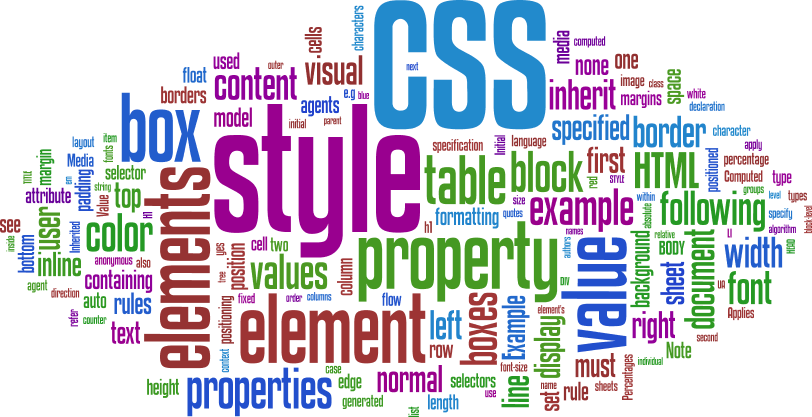What is CSS? 1,678 Views
In order for a web site to be available on the World Wide Web, it must be hosted on a server. There are several different ways to accomplish this. Most large hosting companies will have their own servers and the network infrastructure needed for their site to be available on the Web. However, the equipment and technical resources needed to set up such a system are very expensive, beyond the reach of smaller companies, organizations and individual users. Cascading style sheets, or CSS, is a language designed to allow a designer to specify how a document should be presented. CSS can be used with any markup language, but its main use is with the HTML code that makes up a web page.

In the early days of the World Wide Web, web page designers had to include within the HTML code for each page the various style commands needed to display the page as it was intended. These commands covered such things as what font style, size and color to use, the background color to be used, and several more such commands. This led to HTML files that were more complex than necessary, and made it harder to ensure that a web site had a consistent look across all pages. In addition, the major browsers at the time had different interpretations of how some of these commands should work.
In the mid-1990s the World Wide Web Consortium (W3C) began to look at ways to simplify the use of style commands within HTML, and in 1996 CSS 1 was introduced, followed a year later by CSS 2. Despite attempts since then to release firstly CSS 2.1, and then CSS 3, CSS 2 is still the standard model, although many browsers today support some parts of the CSS2 .1 feature set. Browser support for CSS was slow to emerge, and it took nearly four years before the major browsers included full support for CSS. Since then nearly all browsers support CSS, although even today there are still bugs and idiosyncrasies that prevent pages from displaying as they should in a consistent manner on all browsers. There are assorted work-rounds and fixes for these issues but this has deterred some web page designers from using CSS, as ensuring full support for all browsers can be time-consuming and costly.
Despite these shortcomings, the introduction of CSS has simplified web page design in many ways. It is a lot easier to ensure that all pages on a particular site have a consistent look, simply by using a single style sheet for the whole web site. It is also a lot easier to change the style used for the web site, as rather than editing the HTML code for every page, all that a designer need do is change the appropriate style sheet. In addition, by using different style sheets, the designer can present the same information in different ways, depending on the type of device used to access it. Although slow to mature, and still undergoing some growing pains, it seems clear that Cascading Style Sheets are here to stay.

In the early days of the World Wide Web, web page designers had to include within the HTML code for each page the various style commands needed to display the page as it was intended. These commands covered such things as what font style, size and color to use, the background color to be used, and several more such commands. This led to HTML files that were more complex than necessary, and made it harder to ensure that a web site had a consistent look across all pages. In addition, the major browsers at the time had different interpretations of how some of these commands should work.
In the mid-1990s the World Wide Web Consortium (W3C) began to look at ways to simplify the use of style commands within HTML, and in 1996 CSS 1 was introduced, followed a year later by CSS 2. Despite attempts since then to release firstly CSS 2.1, and then CSS 3, CSS 2 is still the standard model, although many browsers today support some parts of the CSS2 .1 feature set. Browser support for CSS was slow to emerge, and it took nearly four years before the major browsers included full support for CSS. Since then nearly all browsers support CSS, although even today there are still bugs and idiosyncrasies that prevent pages from displaying as they should in a consistent manner on all browsers. There are assorted work-rounds and fixes for these issues but this has deterred some web page designers from using CSS, as ensuring full support for all browsers can be time-consuming and costly.
Despite these shortcomings, the introduction of CSS has simplified web page design in many ways. It is a lot easier to ensure that all pages on a particular site have a consistent look, simply by using a single style sheet for the whole web site. It is also a lot easier to change the style used for the web site, as rather than editing the HTML code for every page, all that a designer need do is change the appropriate style sheet. In addition, by using different style sheets, the designer can present the same information in different ways, depending on the type of device used to access it. Although slow to mature, and still undergoing some growing pains, it seems clear that Cascading Style Sheets are here to stay.
Published : Mon 28 Aug 2017
Updated : Thu 26 Mar 2020
Updated : Thu 26 Mar 2020


0 Comments